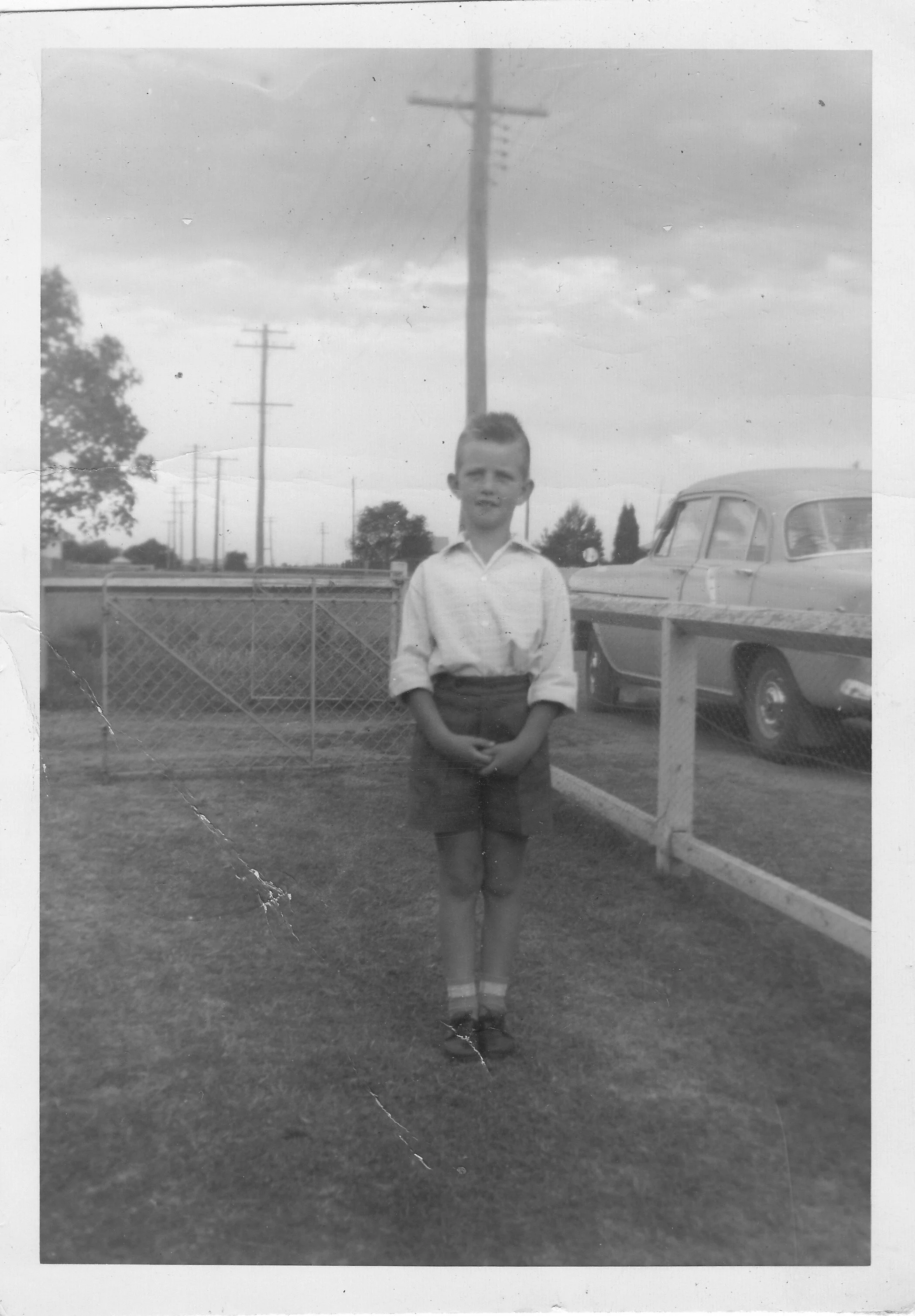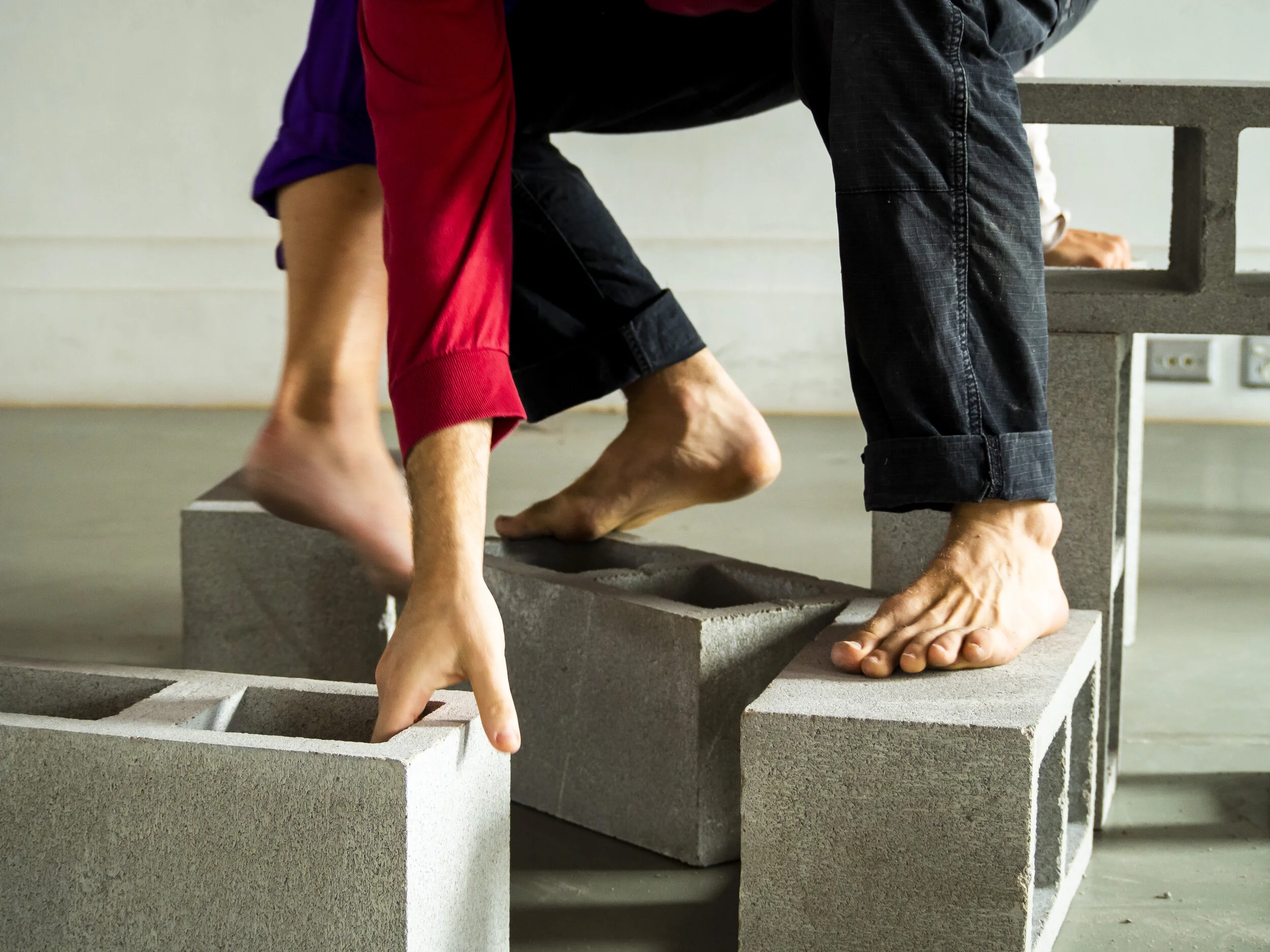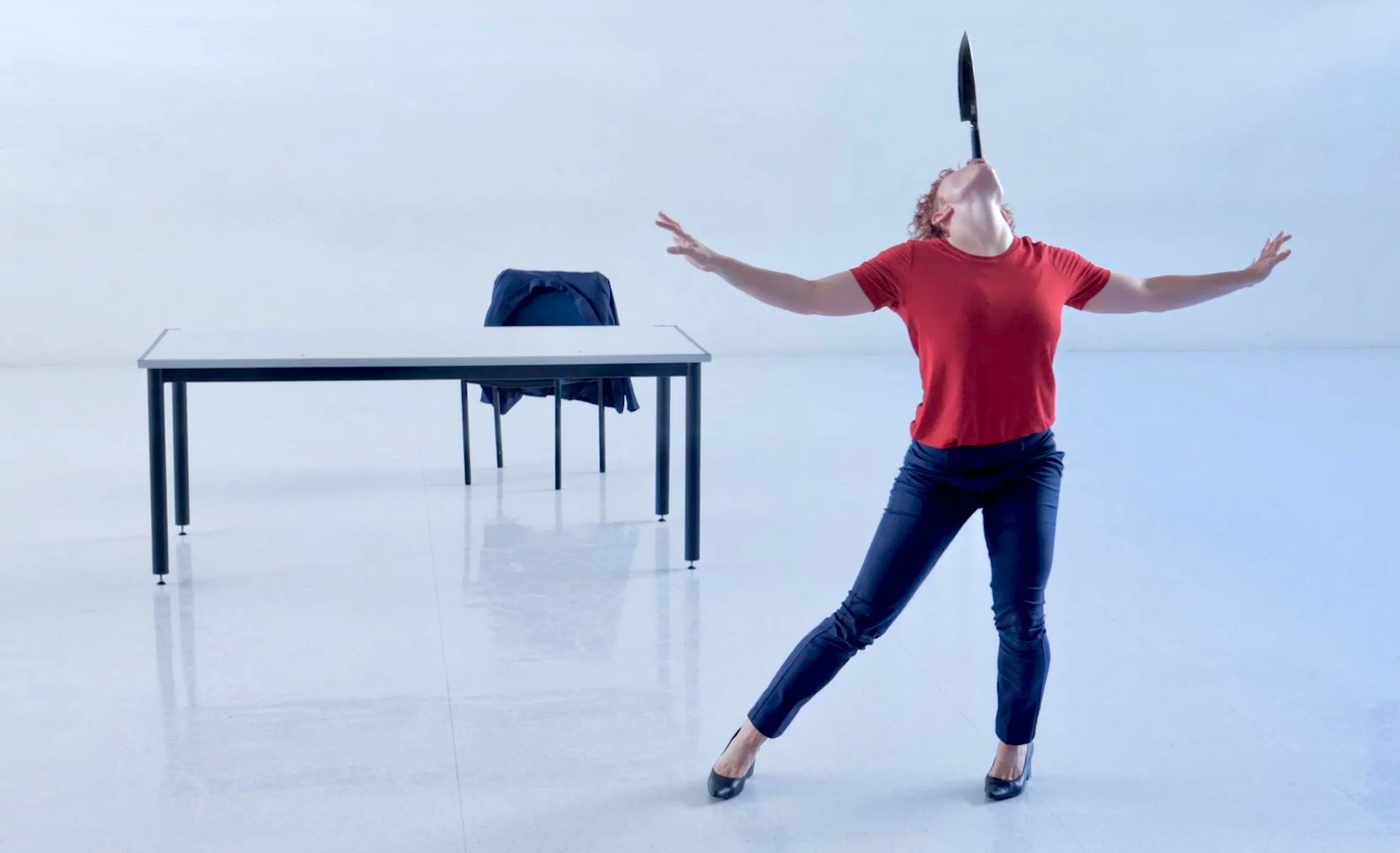Text by Garry Lester
Saturday nights. His Mum and Dad slow dancing in the lounge-room to Nat King Cole. Unforgettable. Two bodies become one: a melding of souls in an act of intimacy and connection born of love and trust and familiarity. He still remembers the romance of it but now the image is tinged with the frisson of erotic desire.
Childhood memories of old time dances in the local community hall. The Cherubs – Mrs Paget on piano, and her sons on drums, trumpet and guitar. Waltzes, foxtrot, quick-step, cha-cha, and that old standard, the progressive barn dance. Always accompanied by Running Bear. Brief encounters and banal banter, then changing partners. Round and round we go the circle is unbroken.
His sister and her friends lost in a reverie under the mulberry tree. Leaping and falling, rolling and recovering, turning and spinning in a vortex of their own making. Imbued with joy. Rapturous even. Radiating an other-worldliness. sending shards of energy out to those who watch.
Late teenage years. A club down by Circular Quay. Jazz and blues. The Bernie McGann Quartet: Bernie on alto-sax, John Pochee on drums, Lloyd Swanton on bass, and Warwick Alder on trumpet. Blues legend Wendy Saddington in vocal overdrive, scatting and ululating before returning to melody.
It’s as tight as they come, but they know each other and the material so well they all feel the freedom to launch into an improvised riff before finding their way back to ensemble play.
He is compelled to move. Bernie, watchful as he blows a riff full of syncopations and bent notes encourages him to dance with even greater abandon. A call and response between band and dancer. the line between movement and music blurs as each performer catches the excitement of free flowing improvisation and the desire to push even further into unexplored creative territory.
There is transformation and a palpable spirit in the room as we bounce off each other’s energy. Finally it’s either Wendy’s vocals or Bernie’s sax that draws us back into rhythmic and melodic accord. It is sophisticated material and we have embraced it like children at play. Play and Dream!
It became his regular haunt every Friday and Saturday night for two years and Bernie and Wendy treat him as another member of the band. It seemed ironic to each of us that in the middle class bohemian world of jazz and blues that three working class souls could find a niche to express themselves.
He is an art student wandering the back streets of Darlinghurst in a pot-fuelled haze when he hears the powerful and primitive sounds of drumming coming from a local church. He enters and finds kindred spirits in a state of joyous abandon. It’s an expressive dance class full of improvisation and raucous physicality. He’s up for it and gives himself over to the driving rhythms and communal passion. After it’s over he is invited to come to a ‘technique’ class the following day. He doesn’t know what this thing called technique is but if it is anything like what he has just been part of…he’s there!
That first technique class messed with his mind. It was formal, and structured and full of movements he didn’t understand and couldn’t do. He lasts about an hour then hides behind the pulpit until making a discrete exit. It was alien and he feels humiliated and vows never to go back again.
And yet there is something about its order and challenge that beguiled him. It took two months before he could summon the courage to go back but the welcoming smiles and generosity of the other students helped to still the feelings of trepidation.
There is something about the discipline of a codified dance technique that brings forth an appealing logic and structure, though it is more than just that. The sense of striving to achieve and making breakthroughs while of shaping and controlling the body becomes an obsession. But he wouldn’t have continued if he didn’t still have the outlet of those free-styling encounters at pubs and clubs around town.
And so began a passion for this thing called dance technique. Challenging and seductive,it can also separate us from the authentic and individual expressive potential within.
Technical mastery is hard won but there can be such a cost when it is achieved at the expense of our ability to manifest the deeper truths of our being. Technique is a means to an end and not the end in itself. If physical facility and precision become the pre-eminent concern and focus for a dancer, how can we manifest the multifarious ‘inner states of being’ that we contain and release the soul and spirit that is the motivating force for this embodied act called dance. Invisible forces that give life to dance.
He attends a contemporary dance performance. Eight dancers working as an ensemble, then in small groups, interspersed with solo phrases. He’s carried away by the sheer facility of everyone on stage. like a sugar hit he wants more and he gets it… but there comes a point where he realises there is nothing more substantial on offer. It’s like watching something contained in a bell jar – a vacuum chamber subject to observation and scrutiny – exotic yet remote. The fourth wall of the theatre remains intact. There have been no incursions or piercing of that structure.
He thinks about it later and realises there is a difference between ‘performing’ and ‘being’ – the former grounded in form and structure and virtuosic display, while the latter delves deeply into inhabitation, immersion, letting go and dancing on the edge of technique, arriving at a place of transformation and revelation.
Virtuosity alone, leads to spectacle, and we who watch it become mere spectators. When the spirit and soul are released we become participants in a metaphysical act.
He’s at another show and there’s a solo that connects with a deeper part of him. He’d taught the performers and watched them rehearse. Russell always seemed engaged in a battle with the technical demands of both class and the choreographic process. upon reflection he realises that struggle has been to go beyond the steps to harness the almost mystical power and energy of ecstatic release. His spirit and soul were dancing.
Australian Ballet’s rehearsal director contacts him in a distressed state. The principal dancers are bored because there are no technical challenges for them in the classical repertoire. He suggests the problem may have less to do with technique than with an understanding of the inherent drama of the stories. If they spent time with a dramaturg delving into what motivates each character and how they respond to circumstances it would deepen their understanding of how they should move. The steps may be the same but the qualitative differences would deepen their investment in the work. Think Margot Fonteyn at age 50 dancing the role of a teenage Juliet, or Carla Fracci in a state of madness in Giselle. We believe both performers because they inhabited their roles. The steps were the vehicle to express deeper truths about the characters they portrayed.
There is a vertiginous thrill in exactitude and there is an overwhelming sense of wonder and awe when performers realise that technique is a means to an end (not the end in itself) and spark the fire that dances between two poles.
Nietzsche reflected upon these (supposedly oppositional) creative impulses: Apollonian order, structure and refinement, and Dionysian risk, abandon and ecstatic release. It’s time to go beyond binary thinking – either one or the other – and embrace the paradox of valuing and utilising both propositions. Not either/or but both: Apollo and Dionysus dancing together.
TEXT WAS PRODUCED BY GARRY LESTER AS PART OF A NEW INITIATIVE OF DELVING INTO DANCE PUBLISHING WRITTEN CONTENT THAT EXPLORES DIFFERENT ASPECTS OF DANCE FROM A RANGE OF PERSPECTIVES. EDITED BY TEIK-KIM POK.
THIS INITIATIVE IS SUPPORTED BY THE VICTORIAN GOVERNMENT THROUGH CREATIVE VICTORIA AND THE AUSTRALIAN GOVERNMENT THROUGH THE AUSTRALIA COUNCIL, ITS ARTS FUNDING AND ADVISORY BODY. IF YOU ENJOY DELVING INTO DANCE PLEASE CONSIDER LEAVING A CONTRIBUTION. CONTRIBUTE HERE.
Garry is a proud Wonnarua man from the Hunter Valley, NSW. He worked as an Indigenous dance officer in remote areas of the Northern territory.
His passion for dance has continued for more than 40 years as a performer, teacher, choreographer and advocate. He has an MA in Fine Arts and a PhD in dance.










Dance was born outside, perhaps dance can return to outside? We practise in a community, by this I mean, in class, rehearsal, performance and in communion with other bodies where we seek to connect, to dispel loneliness, to find purpose, find tribe and belong.